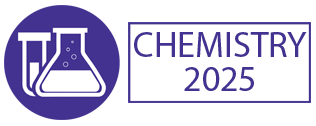Title : Enabling Technologies for engineering precision biomaterials and nanoparticles for drug delivery to re-shape personalized & precision healthcare services
Abstract:
Biodesigners, biotechnologists and biomanufacturers are beginning to realize the promise of PPM, translating to direct benefit to patients or persons-at-risk. For instance, companion diagnostics tools and targeted therapies and biomarkers represent important stakes for BioPharma, in terms of market access, of return on investment and of image among the prescribers. So, developing medicines and predictive diagnostic tools requires changes to traditional clinical trial designs, as well as the use of innovative (adaptive) testing procedures that result in new types of data. Making the best use of those innovations and being ready to demonstrate results for regulatory bodies requires specialized knowledge that many clinical development teams don’t have. The areas where companies are most likely to encounter challenges, are data analysis and workforce expertise, biomarker and diagnostic test development, and cultural awareness. Navigating those complexities and ever-evolving technologies will pass regulatory muster and provide sufficient data for a successful launch of PPM, is a huge task. So, partnering and forming strategic alliances between researchers, biodesigners, clinicians, business, regulatory bodies and government can help ensure an optimal development program that leverages the Academia and industry experience and FDA’s new and evolving toolkit to speed our way to getting new tools into the innovative markets.
Healthcare is undergoing a transformation, and it is imperative to leverage new technologies to support the advent of PPM.
Both PPM and nanobiotechnologies are new to medical practice, which are being integrated into diagnostic and therapeutic tools to manage an array of medical conditions. On the other hand, PPM is a novel and individualized concept that aims to customize therapeutic management based on the personal attributes of the patient. Novel nanomedicines have been employed in the treatment of several diseases, which can be adapted to each patient-specific case according to their genetic profiles.
Nanotechnology is used in conjunction with advanced tools such as OMICS technologies to achieve more personalized therapeutic, diagnostic, and theranostic strategies. Clinical application of nanotheranostics would enable subclinical detection and preventive treatment of diseases. And PPM has thus become an interdisciplinary challenge where nanotechnology-enabled theranostic approaches may indeed become a key driver in harmonizing the needs of the various stakeholders by allowing cost-effective delivery and monitoring of drug efficiency and safety, and close-meshed high-quality data collection.
For instance, nanoparticles and nanocarriers have been developed to overcome the limitations of free therapeutics and navigate biological barriers - systemic, microenvironmental and cellular - that are heterogeneous across patient populations and diseases. Overcoming this patient heterogeneity has also been accomplished through precision and nanodrug-based therapeutics, in which personalized interventions have enhanced therapeutic efficacy. So, the integration of nanotechnology into the PPM-driven healthcare industry holds immense potential for the future, whilst covering: (i) cancer treatment: (ii) diagnostic tools; (iii) tissue regeneration etc. This is the reason for developing global scientific, clinical, social, and educational projects in the area of PPM to elicit the content of the new trend.
Meanwhile, it is urgently needed to discover and establish new methods or strategies to discover, to develop and to create new drugs. And with the support of nanotechnology, the solubility, absorption and targeting of traditional drugs were greatly improved by modifying and fabricating with various types of nanoparticles to some extent, though many shortages remain. For instance, candidate proteins associated with disease development and progression might provide novel targets for new targeted therapeutic agents and biomaterials, or aid the development of assays for disease biomarkers and identification of potential biomarker-target-ligand (drug) tandems to be used for the targeting. Latest technological developments facilitate proteins to be more thoroughly screened and examined in the context of drug discovery and development.
The latter means that advancements in nanobiomedicine have played a crucial role in driving the PPM-guided revolution. With the ability to engineer and manipulate materials at the nanoscale, biodesigners have been able to develop innovative solutions for diagnostics, drug delivery, and imaging. So, the Grand Change and Challenge to secure our Health and Wellness are rooted not in Medicine, and not even in Science! Just imagine WHERE?! In the upgraded Hi-Tech Culture!


